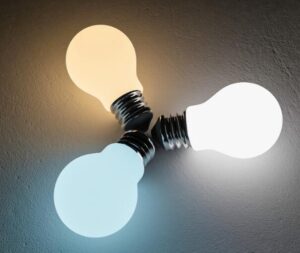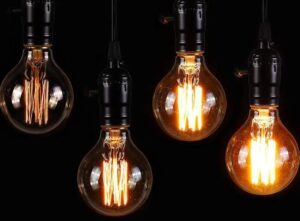Everyone will often look forward to getting the ultimate lighting experience. It is during such pursuits that one will want to know how long do led light bulbs last. Indeed, longevity is an aspect that you can hardly overlook. That is because it will be definitive of the experience you will share and the value for money that you get.
You can hardly ignore how LED lights have become popular in the recent past. But how long will your LED last? Here are a few insights that you will want to keep in mind.
How many hours do LED bulbs last?
That LEDs are some of the long-lasting bulbs is no news. On average, these lights will last for up to 50000 hours or even more. However, you will find a few of them that will hardly go beyond 10000 hours. Did you know that this level of longevity is approximately 50 times that of incandescent lights?
Assuming you use these bulbs for approximately 15 hours a day, they will last for up to 10 years. On the other hand, these bulbs could last for up to 17 years if you use them for 8 hours a day.
It would suffice to mention that non-replaceable LED bulbs attract a distinct lifespan. Mostly, experts suggest that these non-replaceable bulbs could burn for up to 30000 hours. That implies that you could have them for the next 14 years.
While at it, understand that LEDs will hardly burn out like other forms of lighting. Instead, they will dim or degrade with time. As such, the brightness you enjoy today is not the same you will get in the next two years. Once you feel that the LED is becoming too dim for you, you will be free to replace them.
Aspects that influence how long LEDs last
Various aspects go into determining the lifespan of your LEDs. Each of these elements will have a significant impact, and understanding them will be of great value. Some of the top factors will include the following.
1. Excessive temperature and heat stress
While LEDs are often much cooler, they still emit a little heat in their diodes. If this heat becomes relatively too much, it could compromise the longevity of your bulb. As such, ensure that you understand whether the design can help reduce any heat stress within the bulb.
2. Electrical overstress
You could also refer to this factor as EOS, and it involves situations when the LED gets more than the recommended power.
This problem arises from human errors, faulty components in the bulb, and poor PCB layout. Defective power supplies are yet some of the most significant contributors to this problem.
3. Material defects
Usually, LEDs will decay over a long period. That happens because of the varying light intensities produced by such bulbs. As the elements of this bulb keep deteriorating, your lamp keeps dimming over time.
You can never go wrong with LED lights. They will not only last long but also assure you of the ultimate lighting experience.
Pros and Cons of Using LED Lights
From their enhanced energy efficiency to a better lifespan, LED lights have slowly become a darling for many people. That these lights have also become relatively popular in the recent past is no secret. It is in this regard that it will be vital to understand what LED brings to the table.
Pros
Usually, value for money will be dependent on not only the lifespan but also the benefits that you get in the long run. With LED lights, you will be confident of various benefits, including the following.
-
Energy Efficiency
That energy bills could be far-reaching is no longer a secret. Each dollar, for this reason, is worth saving. Fortunately, LED lights will assure you of up to an 80% better efficiency level when compared to incandescent or even fluorescent lights.
It will suffice to mention that up to 95% of the energy in LED gets converted into light. That implies that only 5% will end up as heat.
While at it, these LED lights will draw much lesser power than its counterparts. For instance, in a room where you need an 84W fluorescent light, you will only need a 36W LED light.
With the enhanced energy efficiency, you will be sure of reduced demand from power plants. There will also be hardly any greenhouse emissions for you to worry about in the long run.
-
Enhanced lifespan
The longevity of any bulb will always define the returns that you get from it in the long run.
More than often, you will be sure of this LED light lasting for up to 50000 hours. It could even be more. This lifespan is six to fifteen times that of CFL and fluorescent lights.
You can hardly doubt how such longevity will assure you of lesser replacement costs. Most often, you will witness that replacement will only take place when the bulb becomes too dim for your comfort.
The idea is that you replace this bulb or light once the brightness falls to less than 30%. That could happen after years and years of service.
-
Unmatched brightness and intensity
LED bulbs have proven to be the most reliable when it comes to emitting a high-quality, bright light. It is for this reason that you will no longer need to rely on its wattage to determine how bright it will be.
Thanks to its high number of lumens, this brightness and intensity will remain unparalleled for relatively long. Remember, LED comes with up to 4000 lumens, which is approximately ten times more than what incandescent lights offer.
-
Directional Lighting
Did you know that LED lights will always take a specific direction when lit? This directional illumination comes in handy in making sure that lesser energy gets consumed.
That is because there will hardly be any light trapped within the diffusers or even reflectors. It is through this that there will be no exiting light from that which has been generated.
Well, this feature is vital for recessed lighting, task lighting, and even reading. As long as you need enhanced comfort when doing these things, this should top your priorities.
-
Friendly to the environment
Are you looking for a light that will be relatively friendly to the environment? This option will be the ultimate one for you.
Ideally, with LED lights, you will be confident of no toxic elements emitted in the long run.
There are no harmful elements that could contaminate your environment once disposed of in the long run. This way, you will be sure of protecting not only the environment but also your health.
Cons
Their initial cost could be relatively high sometimes.
Do LED lights burn out?
The simple answer to this question would be no. However, more incisive look into the matter could help in making things much more apparent.
LED lights do not rely on filaments for light production, which means that they are likely to provide this light forever.
Unless the LED component gets compromised, you will enjoy this light for the longest time to come. Remember, these LED elements can only degrade as time goes by.
However, it will be valuable to invest in proper maintenance practices if you intend to have it last longer. Take the time to understand its compatible dimmers and ensure that you do not overheat them. Also, you will have to use them for the right application at all times.
Is it cheaper to leave LED lights on?
Are you worried about compromising the integrity of your light by switching it on and off? You should not. LEDs rely on electro-luminescence, which means that there will hardly be any effect when you switch them on or off now and then.
However, when talking of affordability, you will always save a fraction of energy when you switch off the lights. While it might be insignificant in some households, this is a practice that could come in handy for you in the long run.
So, yes, it is cheaper to have the lights off whenever not in use.
Can LED Lights be left on for 24/7?
First, the choice to leave lights on is solely on personal preferences. That LED lights are built to last long is no secret. It is for this reason that there will be no issue if you decide to leave your lights on for 24 hours, seven days.
Thanks to the minimal light they tend to produce, there will hardly be any problem for you to worry about during this period.
Remember, there will be minimal heat emission, and you will hardly have any fire outbreaks at the end of the day.
How do you stop LED from flickering?
Various measures go into stopping LED lights from flickering. Some of the top things you might want to consider at this time will often include the following.
1. Ensure all your LED products are compatible.
2. Inspect and confirm whether you have any loose wiring. Fix any that you find.
3. Aim at using a constant-current LED driver.
4. Use LED power supply at all times.
What is the best LED light bulb you can buy?
- Philips a19 LED light bulbs with warm glow effect provide 800 lumens of soft white light, equivalent to 60-watt incandescent. These bulbs fit standard medium base (E26) Fixtures with the look and feel of a classic bulb. Not for use with Philips hue products
- Warm glow dimming offers flicker-free, silent dimming that works with more dimmer switches than any other LED on the market. The more you dim, the warmer the light-from 2200- to 2700-kelvin just like traditional incandescent light bulbs
- These best-in-class, energy Star certified Philips LEDs provide steady, natural Lighting at 1/4 of the energy of incandescent, 1/2 the energy of Halogens and with 10X and 4X the lifespan respectively. Philips LEDs are mercury-free so they don't contribute to harmful hazardous waste
- a19 soft white light bulbs are perfect anywhere you need a balance of clarity and warmth with the flexibility of dimming in an slightly smaller bulb. This bulb can be used in enclosed Fixtures and Damp locations
- This 8-pack of a19 LEDs is expected to deliver a lifetime of up to 15, 000 hours and over 20 years based on standard usage of three hours per day, saving you the cost and hassle of frequent bulb replacement
Conclusion
In conclusion, you can hardly overlook the significance and worth of LED lights. As long as you maintain them accordingly, they will last you for a lifetime.




